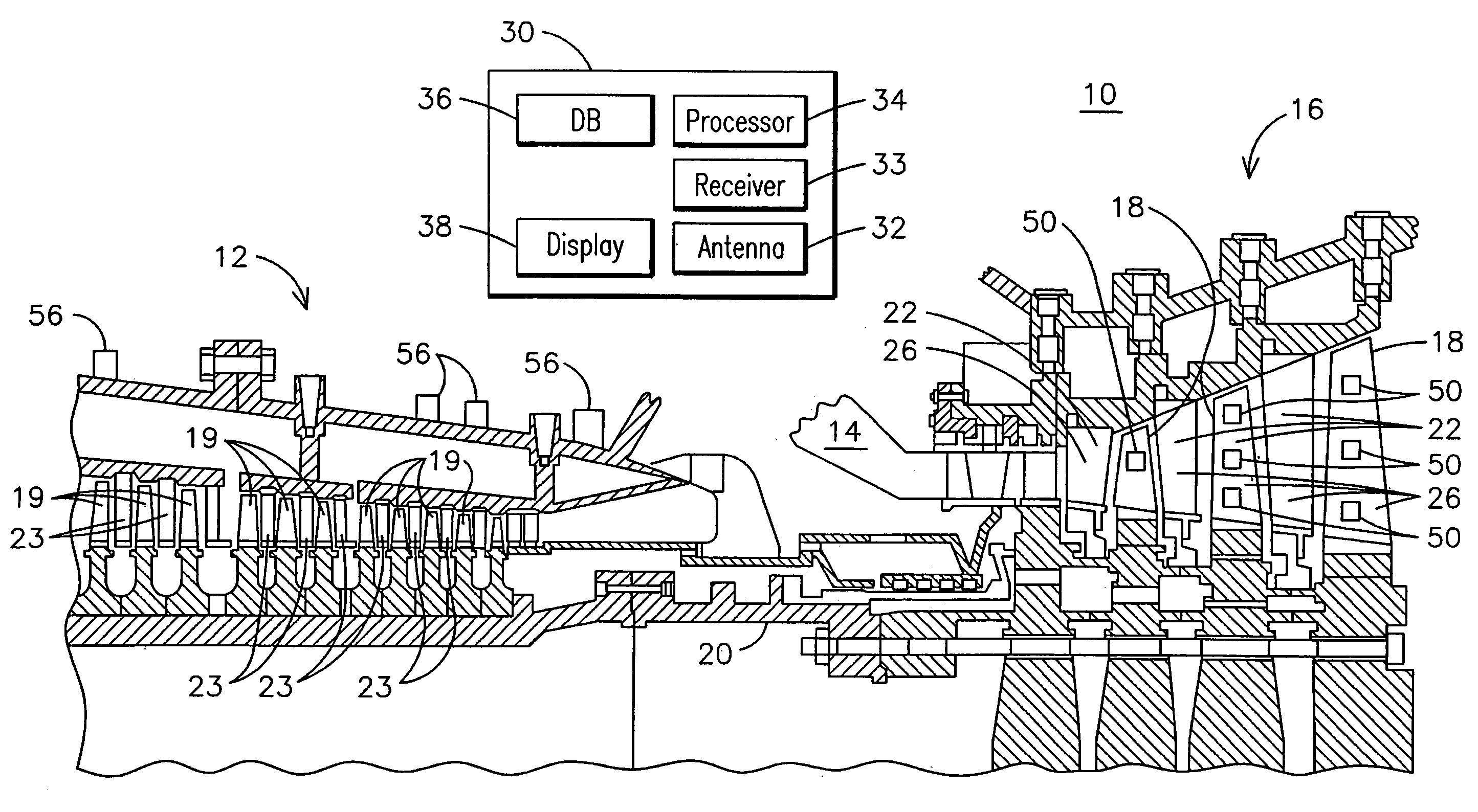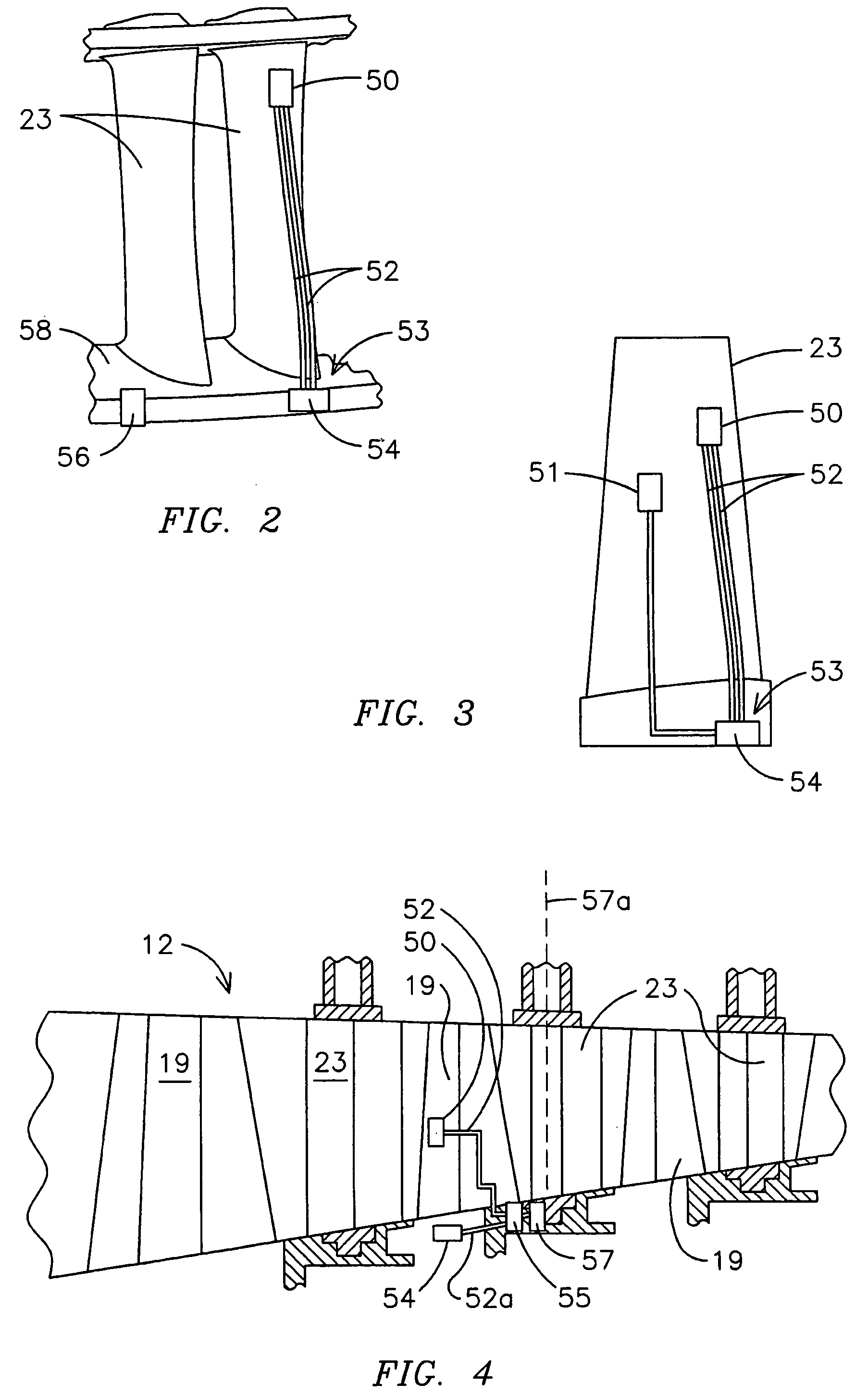Apparatus and method of detecting wear in an abradable coating system
a coating system and abradable technology, applied in additive manufacturing apparatus, non-positive displacement fluid engines, liquid fuel engine components, etc., can solve the problems of difficult to obtain real-world operating environment data, designers and operators have very little information regarding the internal status of turbine engine components during operation, and superalloy materials cannot withstand extended exposure to hot combustion gas of current generation gas turbine engines withou
- Summary
- Abstract
- Description
- Claims
- Application Information
AI Technical Summary
Problems solved by technology
Method used
Image
Examples
Embodiment Construction
[0033] Embodiments of the present invention use sensors, such as a planar proximity sensor, embedded within coatings, such as an abradable coating system, or installed on or within a surface of a component to determine the wear behavior of the coating or component when contacted by another component. Abradable coating systems may be used for gas path clearance control, which influences power output and efficiency of a gas turbine such as the exemplary combustion turbine of FIG. 1. The abradable coating system abrades when contacted by another component, such as a plurality of rotating blades 18 secured to a rotatable central shaft 20 mounted within turbine 16.
[0034]FIG. 1 illustrates an exemplary combustion turbine 10 such as a gas turbine used for generating electricity as will be recognized by those skilled in the art. Embodiments of the invention may be used with combustion turbine 10 or in numerous other operating environments and for various purposes as will be recognized by t...
PUM
| Property | Measurement | Unit |
|---|---|---|
| operating temperatures | aaaaa | aaaaa |
| operating temperatures | aaaaa | aaaaa |
| thickness | aaaaa | aaaaa |
Abstract
Description
Claims
Application Information
 Login to View More
Login to View More - R&D
- Intellectual Property
- Life Sciences
- Materials
- Tech Scout
- Unparalleled Data Quality
- Higher Quality Content
- 60% Fewer Hallucinations
Browse by: Latest US Patents, China's latest patents, Technical Efficacy Thesaurus, Application Domain, Technology Topic, Popular Technical Reports.
© 2025 PatSnap. All rights reserved.Legal|Privacy policy|Modern Slavery Act Transparency Statement|Sitemap|About US| Contact US: help@patsnap.com



